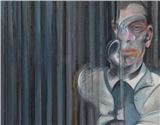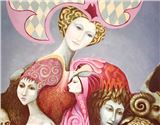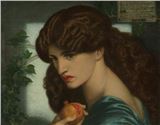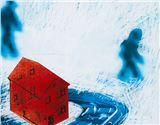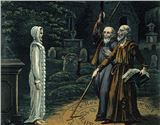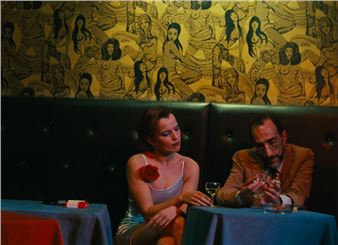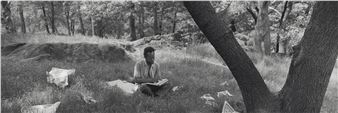Painting the Visible World: American Women Realists
It has been more than half a century since Linda NochlinÔÇÖs famous essay, ÔÇ£Why Have there been no Great Women Artists?ÔÇØ (1971); yet only since the new millennium have a cache of museums reconsidered male-dominated displays and programming relative to major postwar styles in the United States.1
As the pluralism of the 1980s set in, art press on an array of trends still focused on male artists and generally ignored related work by women, who could only (or at least) be noted within a cadre of feminist art, compartmentalized. Even low-profile directions like ÔÇ£Contemporary American Realism,ÔÇØ loosely coalesced around 1980, has been referenced, retrospectively, mainly through the names of male artistsÔÇöexclusively in Wikipedia in 2016 (since amended).2
In fact, I recall that women painters were highly visible in the many galleries dealing with representational art in New York and elsewhere through the 1980s, well into the 1990s. In the mid-1970s, renowned critic Lawrence Alloway wrote about ÔÇ£the contribution of women to the renewal of realism,ÔÇØ most likely influenced by the figurative paintings and feminist criticism of his spouse, Sylvia Sleigh.3
Along with Nochlin, Grace Glueck, Irving Sandler and Hilton Kramer were among other well-known art writers who paid attention to re-emerging realism and covered women practitioners. Yet, ÔÇ£the recordÔÇØ indicated a gender gapÔÇöas Frank Bernarducci and I discussed in an informal conversation; generating an enthusiastic collaboration on this exhibition. In one sense, we approached the project as a kind of reunion. We also, in the end, mean to suggest one recent lineage within a persistent painting tradition based on its early theoretical conception as a reflection on and of things seen.
Although none of the featured artists have explicitly worked towards shared artistic goals, each has exhibited with and looked carefully at the work of several of the others, intermittently, and some became good friends through the roughly three decades covered. Some institutional connections have circulated among them, despite few direct overlaps; for example: Yale University studio art alums include Audrey Flack, Sylvia Plimack Mangold, Janet Fish, and Nancy Hagin; Pratt Institute comes up in the backgrounds of Flack, Jane Wilson, Martha Mayer Erlebacher, Joan Semmel, Catherine Murphy, and Leigh Behnke; and the Skowhegan School of Painting and Sculpture for Fish, Murphy, and Lois Dodd. The geographic range skews to plenty of time within New York as a base; also, the northeast broadly, and, crucial for the respective oeuvre of Wilson and Jane Freilicher, the Hamptons.
We want to revisit and highlight, through the juxtapositions of the selected paintings, aesthetic links, as well as distinctions. Within pragmatic limitations, our choices were funneled partly through past documentation; or put another way, from among artists who have exhibited somewhat regularly and been critically recognized to some degree (as suggested above). Especially due to mainstream art world exclusions in the era beyond genderÔÇö prominently race and ethnicityÔÇöthe paintings gathered are not and cannot not be posited as paradigmatic of the artistic concerns they encompass. Indeed, a relatively narrow demographic, delimited by a few intertwined personal and professional networks, is our exhibitionÔÇÖs collective matrix and scope.

Recommended for you
It has been more than half a century since Linda NochlinÔÇÖs famous essay, ÔÇ£Why Have there been no Great Women Artists?ÔÇØ (1971); yet only since the new millennium have a cache of museums reconsidered male-dominated displays and programming relative to major postwar styles in the United States.1
As the pluralism of the 1980s set in, art press on an array of trends still focused on male artists and generally ignored related work by women, who could only (or at least) be noted within a cadre of feminist art, compartmentalized. Even low-profile directions like ÔÇ£Contemporary American Realism,ÔÇØ loosely coalesced around 1980, has been referenced, retrospectively, mainly through the names of male artistsÔÇöexclusively in Wikipedia in 2016 (since amended).2
In fact, I recall that women painters were highly visible in the many galleries dealing with representational art in New York and elsewhere through the 1980s, well into the 1990s. In the mid-1970s, renowned critic Lawrence Alloway wrote about ÔÇ£the contribution of women to the renewal of realism,ÔÇØ most likely influenced by the figurative paintings and feminist criticism of his spouse, Sylvia Sleigh.3
Along with Nochlin, Grace Glueck, Irving Sandler and Hilton Kramer were among other well-known art writers who paid attention to re-emerging realism and covered women practitioners. Yet, ÔÇ£the recordÔÇØ indicated a gender gapÔÇöas Frank Bernarducci and I discussed in an informal conversation; generating an enthusiastic collaboration on this exhibition. In one sense, we approached the project as a kind of reunion. We also, in the end, mean to suggest one recent lineage within a persistent painting tradition based on its early theoretical conception as a reflection on and of things seen.
Although none of the featured artists have explicitly worked towards shared artistic goals, each has exhibited with and looked carefully at the work of several of the others, intermittently, and some became good friends through the roughly three decades covered. Some institutional connections have circulated among them, despite few direct overlaps; for example: Yale University studio art alums include Audrey Flack, Sylvia Plimack Mangold, Janet Fish, and Nancy Hagin; Pratt Institute comes up in the backgrounds of Flack, Jane Wilson, Martha Mayer Erlebacher, Joan Semmel, Catherine Murphy, and Leigh Behnke; and the Skowhegan School of Painting and Sculpture for Fish, Murphy, and Lois Dodd. The geographic range skews to plenty of time within New York as a base; also, the northeast broadly, and, crucial for the respective oeuvre of Wilson and Jane Freilicher, the Hamptons.
We want to revisit and highlight, through the juxtapositions of the selected paintings, aesthetic links, as well as distinctions. Within pragmatic limitations, our choices were funneled partly through past documentation; or put another way, from among artists who have exhibited somewhat regularly and been critically recognized to some degree (as suggested above). Especially due to mainstream art world exclusions in the era beyond genderÔÇö prominently race and ethnicityÔÇöthe paintings gathered are not and cannot not be posited as paradigmatic of the artistic concerns they encompass. Indeed, a relatively narrow demographic, delimited by a few intertwined personal and professional networks, is our exhibitionÔÇÖs collective matrix and scope.
Contact details


 ARTISTS
ARTISTS
